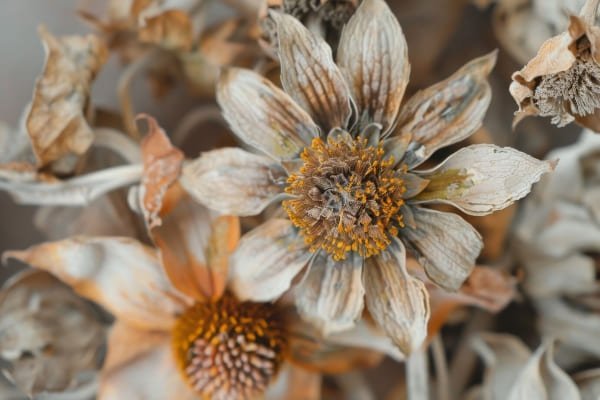


Dried Protea, with its striking texture, bold structure, and unique beauty, has become a favorite in floral arrangements, especially for those seeking something a little more exotic and long-lasting. Whether used as a focal point or a complementary element, dried Protea adds an undeniable allure to any arrangement. However, to create a truly stunning display, it’s essential to pair Protea with the right companion flowers. In this comprehensive guide, we’ll explore the best flowers to pair with dried Protea, how to balance different textures and colors, and tips for creating harmonious arrangements that highlight the beauty of Protea.
Protea is native to South Africa and is known for its large, dense flower heads that can last for weeks as fresh flowers and indefinitely when dried. The flower comes in a variety of species, each with its own unique shape, size, and color, but all share a common characteristic: a robust and sculptural appearance. The woody stems and papery petals of dried Protea maintain their shape and color exceptionally well, making them ideal for long-lasting arrangements.
Dried Protea is often found in warm, earthy tones such as deep reds, oranges, soft pinks, and creamy whites. Its texture is both coarse and intricate, with spiky petals that contrast beautifully against softer, more delicate blooms. This contrast in texture and color makes it a versatile choice for various styles, from rustic and natural to bold and contemporary.

When selecting companion flowers for dried Protea, consider the following factors: texture, color harmony, and overall composition. The right combination will enhance the Protea’s natural beauty and create a cohesive, visually appealing arrangement.
Why It Works: Dried Eucalyptus, with its silver-green leaves and subtle fragrance, is a classic companion for Protea. The soft, rounded leaves of Eucalyptus provide a gentle contrast to the angular, spiky nature of Protea, creating a balanced and harmonious arrangement. Additionally, Eucalyptus’s muted color palette complements the warm tones of Protea without overshadowing them.
How to Use: Use Eucalyptus as a filler or background element in your arrangement. Its long, trailing stems can add height and movement, while its leaves can soften the overall look. Eucalyptus also pairs well with a variety of other flowers, making it a versatile choice for mixed arrangements.
Why It Works: Pincushion Protea, a close relative of Protea, is another excellent companion. It shares a similar structure but with finer, more intricate blooms. The spherical shape of the Pincushion adds a playful, textural element to arrangements, while its vibrant colors, ranging from bright oranges to yellows, can add a pop of contrast against the more subdued tones of Protea.
How to Use: Position Pincushion Protea near the focal Protea blooms to create a dynamic, layered effect. The varying sizes and textures between the two flowers create depth and interest without clashing.
Why It Works: Banksia, another member of the Proteaceae family, is known for its cylindrical flower heads and woody texture. Like Protea, Banksia dries beautifully, retaining its shape and color for long periods. The more subtle, earthy tones of Banksia, such as browns and burnt oranges, blend seamlessly with Protea, while its unique form adds structure to arrangements.
How to Use: Use Banksia as a secondary focal point in larger arrangements or as a structural element in smaller displays. Its vertical shape can help guide the eye through the arrangement, creating a sense of movement.
Why It Works: The soft, delicate petals of dried roses provide a stark yet beautiful contrast to the rugged texture of Protea. Roses bring a romantic, vintage feel to arrangements, and their varied colors—from deep burgundy to soft pastels—can either complement or contrast with the hues of Protea.
How to Use: Use dried roses to soften the overall look of an arrangement. They can be tucked around the base of Protea blooms or interspersed throughout the arrangement to add softness and depth.
Why It Works: Dried Statice, known for its papery, colorful clusters, is a fantastic filler flower that adds both texture and color to arrangements. Its small, delicate blooms provide a light and airy contrast to the boldness of Protea. Statice is available in a wide range of colors, including purples, whites, and pinks, making it easy to match with your color scheme.
How to Use: Use Statice as a filler throughout the arrangement. Its fine texture helps to bridge the gap between larger, more dominant flowers, creating a cohesive and balanced look.
Why It Works: Dried Lavender brings a touch of elegance and fragrance to any arrangement. Its slender, vertical stems and soft purple hues contrast beautifully with the bold, structural nature of Protea. Lavender’s calming scent adds an aromatic dimension to the arrangement, enhancing the sensory experience.
How to Use: Place dried lavender in clusters throughout the arrangement to add height and a subtle pop of color. Lavender works particularly well in rustic or country-themed arrangements, where its simplicity and charm shine.
Why It Works: Dried grasses, such as Pampas Grass and Lagurus, offer a natural, wild element that pairs wonderfully with the exotic look of Protea. The soft, feathery texture of these grasses contrasts with the firm, architectural structure of Protea, adding a sense of lightness and movement to arrangements.
How to Use: Use dried grasses as background elements or fillers. Their tall, wispy nature makes them ideal for adding height and creating a sense of depth. They’re also perfect for creating a more casual, bohemian look.
Why It Works: Craspedia, with its bright yellow, spherical blooms, adds a playful and cheerful element to arrangements. The bold color of Craspedia contrasts sharply with the more subdued tones of Protea, creating a lively and eye-catching display.
How to Use: Position Craspedia throughout the arrangement as an accent flower. Its round shape and vibrant color draw attention and can be used to create focal points or highlight specific areas of the arrangement.
Why It Works: Dried Hydrangeas are known for their large, voluminous blooms that add fullness and softness to arrangements. Their muted tones—often in shades of green, blue, and beige—complement the earthy colors of Protea, while their soft texture contrasts with Protea’s boldness.
How to Use: Use dried Hydrangeas to add volume and a lush feel to the arrangement. They work well as a base or background flower, providing a soft, pillowy effect that enhances the more structured elements.
Why It Works: Dried Thistle, with its spiky texture and subtle blue or purple hues, complements the rugged, wild nature of Protea. The contrast between the two adds a dynamic, almost edgy feel to arrangements, making them stand out.
How to Use: Use Thistle sparingly as an accent flower. Its spiky texture adds interest and can be used to break up softer elements in the arrangement. Place it strategically to create visual tension and intrigue.

When creating a dried flower arrangement featuring Protea, it’s important to consider the balance of texture, color, and form. Here are some tips:
Protea is often the star of the arrangement, so start by placing your Protea blooms first. Consider their size, shape, and placement to ensure they are the focal point of the arrangement.
Once the Protea is in place, add your companion flowers. Use a mix of textures—soft, delicate blooms like roses and statice, combined with more structured flowers like Banksia and Thistle, create a dynamic and balanced look.
Choose companion flowers that either complement or contrast with the Protea’s colors. For example, warm-toned Protea pairs well with muted greens and whites, while deep reds or oranges can be paired with bright yellows or purples for a more vibrant look.
Layering textures adds depth and interest to the arrangement. Combine the spiky texture of Protea with the softness of Hydrangeas or the feathery lightness of grasses to create a visually engaging display.
Vary the heights and shapes of the flowers to create movement and flow within the arrangement. Tall, slender stems like Lavender or Pampas Grass can add verticality, while round, clustered blooms like Craspedia add focal points.
Creating a dried flower arrangement with Protea as the focal point offers endless possibilities for creativity and expression. By carefully selecting companion flowers that complement the texture, color, and form of Protea, you can create stunning, long-lasting arrangements that are both visually striking and uniquely personal. Whether you’re aiming for a rustic, natural look or a bold, contemporary style, the versatility of Protea and its companion flowers ensures that your arrangement will be a beautiful and lasting testament to the test.